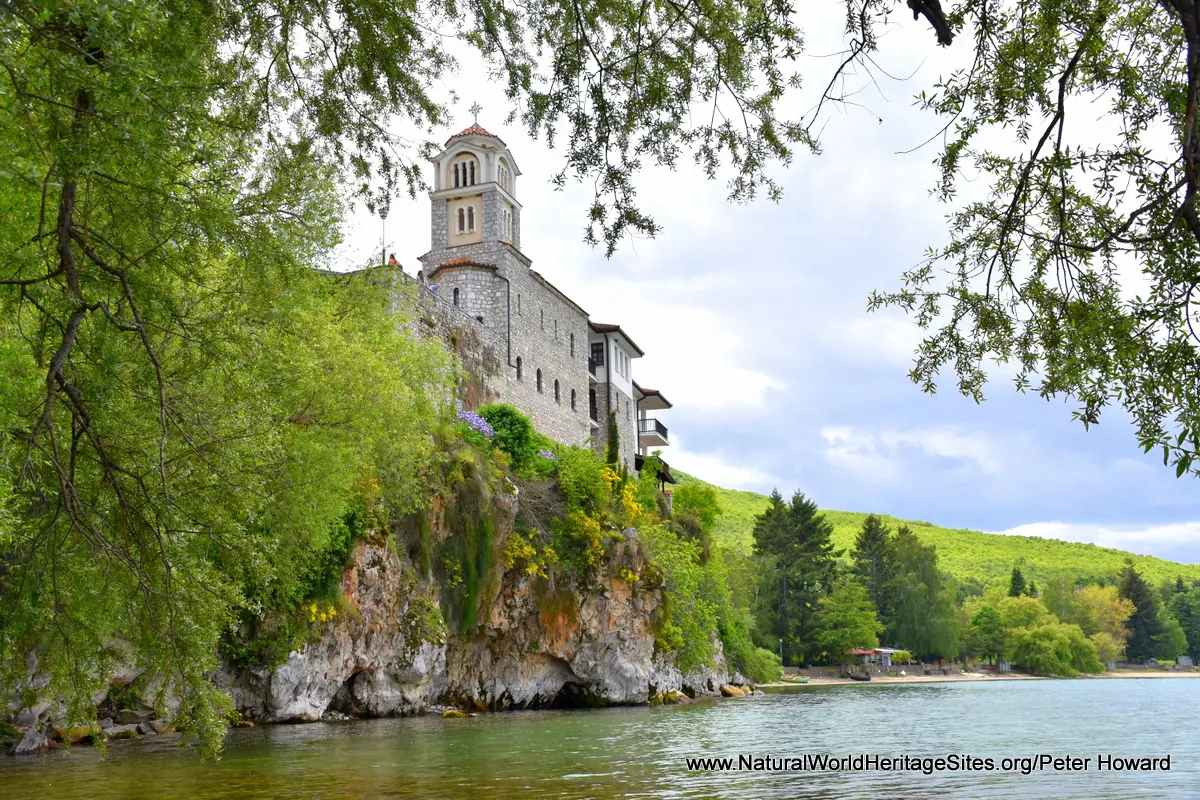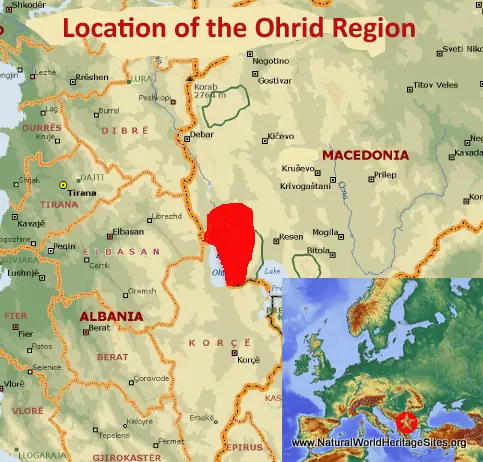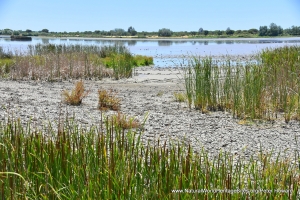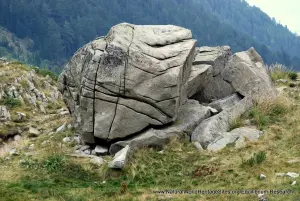EXPLORE The Natural and Cultural Heritage of the Ohrid Region with this slideshow, check the location map and get all the facts and information below.
For slideshow description see right or scroll down (mobile). Click to view slideshow
Location and Values: The Natural and Cultural Heritage of the Ohrid Region straddles the border between Albania and North Macedonia. It is listed as a mixed site, satisfying both natural and cultural criteria. From a natural heritage perspective the site’s outstanding values relate to Lake Ohrid, one of the oldest lakes in the world which is considered to be a ‘natural museum’ of freshwater organisms from the Tertiary period, whose close relatives exist only as fossils. There are very few lakes in the world with such ancient, tectonic origins (Lakes Baikal and Tanganyika being the best known examples elsewhere).
Despite its relatively small area, Lake Ohrid is 289m deep, and half its inflowing waters come from very pure underground springs linked to Lake Prespa to the east. The inflow volume is low compared with the huge volume of water contained in this deep lake basin, so turnover takes 60-70 years. The Lake’s biodiversity is exceptional in that a very high proportion of its invertebrate animal species is endemic, including 90% of snails, 66% of small crabs, and the unusual Lake Ohrid sponge. Ten of the Lake’s 17 fish species (60%) are also found nowhere else in the world. This unusual lake system, with its rich endemic flora and fauna therefore qualifies for world heritage status, even if the diversity and scale of its attributes are less significant than some other similar ancient lakes.
Conservation Status and Prospects. According to IUCN’s Conservation Outlook Assessment (2017) the conservation status of the Natural and Cultural Heritage of the Ohrid Region is of ‘significant concern’. The IUCN report notes that the natural values of the site are under pressure from various factors, including lakeshore infrastructure developments, tourism, and poor management of solid waste and wastewater. The report notes that the hydrological balance of the lake has been upset through discharge of the lake’s water into the Black Drin river (to ensure the operation of a downstream hydroelectric scheme). Further threats to the world heritage values of the lake arise from invasive alien species, eutrophication of the lake’s waters from agricultural runoff and the re-introduction of commercial fishing (after a seven-year moratorium). Furthermore, the IUCN report emphasizes the need for extension of the site to cover the entire lake (including a third of the lake that lies in Albanian territory) as well as ensuring more rigorous planning and application of environmental standards in the development of new roads and other infrastructure.
Links:
Google Earth
UNESCO Official Website
IUCN Conservation Outlook
UNEP-WCMC Site Description
Birdlife IBA
Slideshow description
The slideshow ‘tells the story’ of the Natural and Cultural Heritage of the Ohrid Region with a portfolio of photos by Peter Howard from a visit in May 2019. They illustrate the natural attributes and landscape features of this outstanding place including some of the typical plants and animals, as well as the main cultural features such as churches, monasteries and vernacular architecture in the ancient town of Ohrid.
The slideshow takes a ‘virtual tour’ of the site beginning in the far south, and travelling northwards. It shows the typical vegetation and flora of the Galichica National Park, with its expansive views of the Lake, before descending to the lake shore for a tour of the ancient Monastery and tiny churches at Naum (where underground springs emerge). From here the tour takes in the eastern shoreline of the lake, with multiple stops to explore the shoreline cliffs, stony beaches and crystal clear waters before arriving at the Bay of Bones, where a reconstruction of a Bronze Age settlement (on stilts over the water) is shown.
The slideshow continues with a series of photos from the ancient town of Ohrid, featuring some of its numerous exemplary religious and vernacular buildings. Moving further north from Ohrid, the polluted inflow of the (diverted) River Sateska is shown, and then a series of photos of exhibits in the Natural History Museum of Dr Nikola Nezlobinski at Struga, where a comprehensive collection of specimens and illustrations of many of the Lake’s endemic species can be seen. The slideshow finishes with images of some of the threats and challenges to the site, including the use of pesticides on agricultural lands, pollution of the outflow river in Struga, piles of unmanaged garbage and road construction through the core of the site.
Factfile
Website Categories: Lakes, Freshwater Wetlands & Glaciers;
Area: 947 km2
Inscribed: 1979 (extended 1980, 2019)
Criteria:
- Exceptional natural phenomenon (vii);
- Cultural criteria (i), (iii), (iv);





